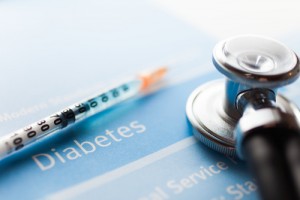 A new study revealed that triglycerides can be produced in the liver independently of insulin action in the liver. The study, entitled “Insulin-independent regulation of hepatic triglyceride synthesis by fatty acids” and published in the Proceedings of the National Academy of Sciences, was co-authored by Daniel F. Vatner and Sachin K. Majumda, who are part of Dr. Gerald I. Shulman’s group in the Cellular and Molecular Physiology department at Yale University School of Medicine’s Howard Hughes Medical Institute.
A new study revealed that triglycerides can be produced in the liver independently of insulin action in the liver. The study, entitled “Insulin-independent regulation of hepatic triglyceride synthesis by fatty acids” and published in the Proceedings of the National Academy of Sciences, was co-authored by Daniel F. Vatner and Sachin K. Majumda, who are part of Dr. Gerald I. Shulman’s group in the Cellular and Molecular Physiology department at Yale University School of Medicine’s Howard Hughes Medical Institute.
A long unresolved paradox in type 2 diabetes (T2D) has been the evidence that the hepatic production of glucose does not respond to insulin, i.e. insulin resistance. As a result, there is no control in glucose production, however, the liver continues to produce triglycerides — a type of fat — leading to several health conditions, including high blood sugar and fatty liver disease. For several years, research has been focused on the role of insulin in the liver in the production of triglycerides, while the Dr. Shulman team decided to test the hypothesis that the production of triglycerides in the liver was dependent mainly on the delivery of fatty acids to the liver and independent on alteration on hepatic insulin signaling pathway.
To test this hypothesis, the researchers established a new method of mass spectrometry of LC-MS/ MS to measure in vivo the rates of hepatic fatty acid esterification. They used three experimental groups of rats: control, insulin-resistant fed a high-fat diet, and rats genetically modified insulin receptors. The researchers found that rates of hepatic esterification of fatty acids into triglycerides was mainly dependent on fatty acid production and independent of insulin action in the liver — contrary to what is seen in hepatic de novo lipogenesis. These findings explained the augmentation of triglyceride synthesis in the liver when there is hepatic insulin resistance.
“These results provide new insights into the pathogenesis of non-alcoholic liver disease and provides new approaches to treat fatty liver disease, which is now the most common liver disease in the world,” said Dr. Shulman in a press release.


